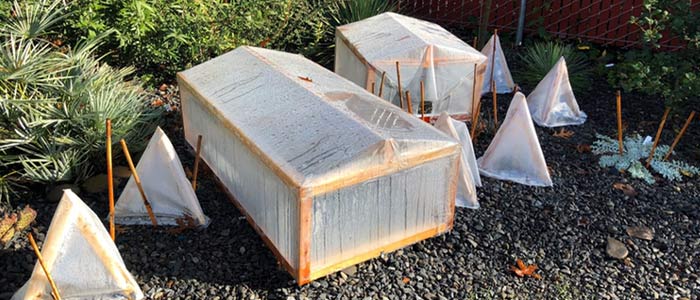
Protecting Tender Plants Over Winter
Often our desire to grow a particular plant or group of plants is far greater than our ability to actually do so in whatever climate we might live in. It seems that no matter where you live, whether it’s in the cold bitter winters of the northeast or the warm, nearly sub-tropical climates of Southern California or Florida, there’s always some group of plants that want just slightly warmer growing conditions than you can give them. Gardeners have gone to great lengths to find the perfect little microclimates, raise nighttime temperatures, add extra humidity, provide increased drainage or add cold protection over winter to make their chosen plants grow. And with a little ingenuity and some low-cost materials you can get citrus and agaves to grow where it was previously thought impossible!
Here in Portland we are lucky to have mild winters, a fair amount of heat in summer, and a distinct dry season that allows for us to grow a huge variety of plants. Within the Portland metro area we’ve noticed very distinct microclimates that can change within just 50 blocks. For example, in Milwaukie or inner Southeast, Marina Madrones, Jelly Palms and a huge variety of citrus sail through the winter without hardly batting an eye or dropping a leaf. But where our nursery is located in East Portland, between Powell Butte and Mt. Scott, we often get a ripping east wind and nighttime temperatures that are 2-3 degrees lower than those recorded at PDX airport. While these differences in winter weather might seem subtle, they can be the difference between a plant surviving the winter or not.
And while we certainly do our fair share of anxiously looking at the weather forecast and cramming potted plants into greenhouses, we also try to be a little more proactive with our precious in-ground plants. All over the nursery grounds we’ve planted things that are sometimes at the edge of their cold hardiness or simply need a little protection from winter rainfall to make it to spring. And it seems that every now and then our summertime optimism for a particular variety seems delusional when December rolls around. But we won’t let a little cold weather stop us from enjoying Oregon-grown citrus and prickly pear! We have technology!
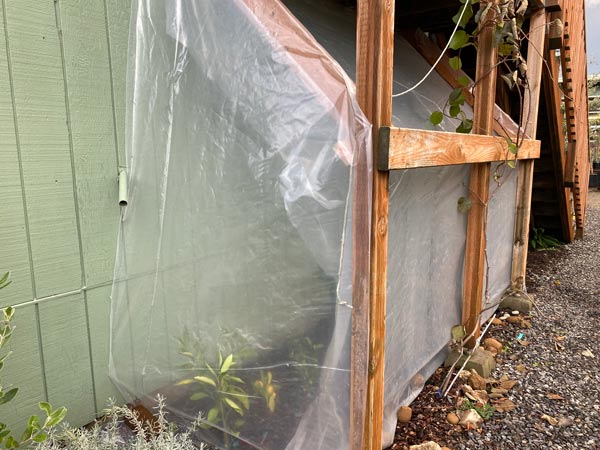
With a little leftover greenhouse plastic we can create a temporary mini-greenhouse for the more tender citrus planted along the south side of the cooler barn. A small amount of heat also comes off of the coolers and helps to keep this area frost free. In addition to this we also have overhead frost protection from the deck and the stairs block the east wind slightly.
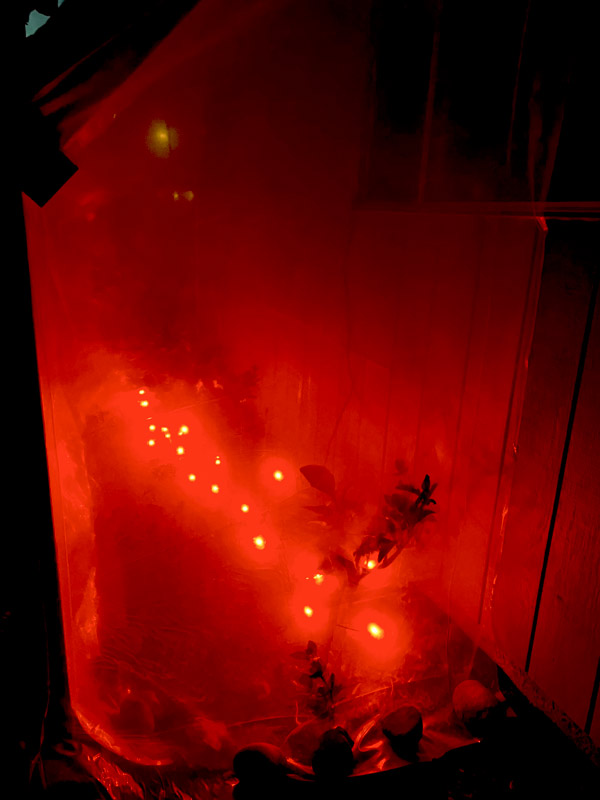
And in addition to the heat from the coolers, we’ve wrapped all the citrus trees in incandescent holiday lights. These old fashioned bulbs work better than LEDs for frost protection purposes because they give off a little bit of heat. They also make for a very festive and a little bit spooky look to the nursery once the sun sets!
Our most tender varieties are planted out here such as various kumquats and hardy mandarins that we’re trialing to test their cold hardiness. Varieties include Fukushu Kumquat, Keraji Mandarin, Miho Wase, Changsha Satsuma, U.S. 119, and an interesting Meyer Lemon x Kumquat hybrid. Our lowest dip below freezing this year has been to 27ºF and all the citrus still look great!
For less frost-tender varieties, we plant them out exposed to the east wind with just a string of holiday lights to protect them.
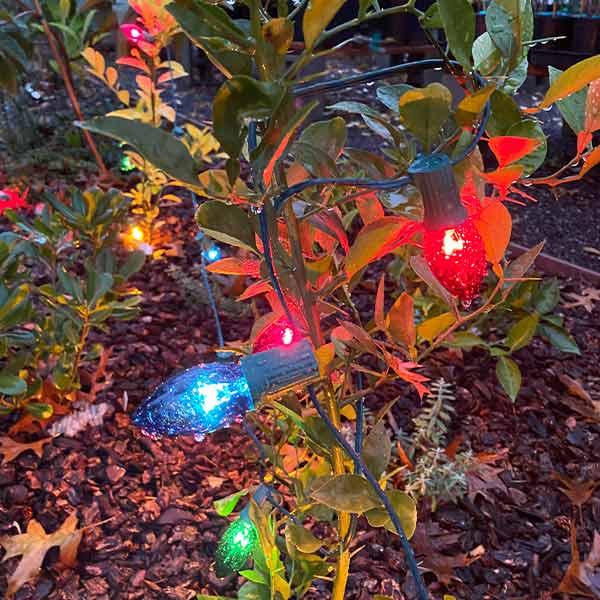
Varieties planted here are much hardier and typically have some Poncirus blood in them. Though not as great for fresh eating, they are still excellent varieties to have around for juicing, dressings, and marmalades. Varieties in this section include Sudachi Ichandrin, Nasnaran, Dunstan, Ichang Papeda, and Calamandarin.
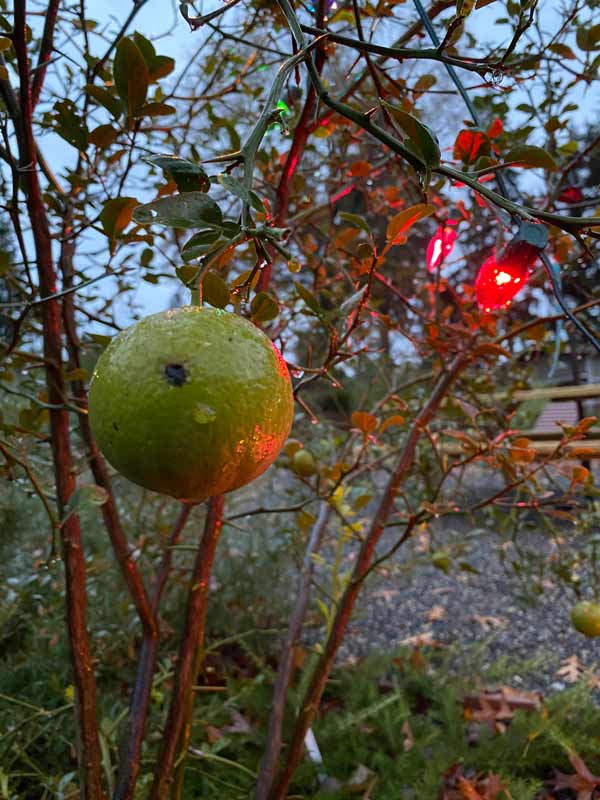
But Citrus isn’t all that we’re working to overwinter here at the nursery! In our gravel garden we have many xeric plants that can easily tolerate temperatures down to at least 0ºF., but much prefer to be dry over winter. These include all of our favorite agaves, various prickly pears, and many other succulent plants! Many of these plants hail from climates that have the inverse rainfall patterns of the Pacific Northwest, fairly dry winters and intense monsoonal rainfall in the summers. Though most of the varieties we grow would be fine overwintering without the protection from winter rain, adding some micro-greenhouses over them keeps them blemish free and looking perfect.
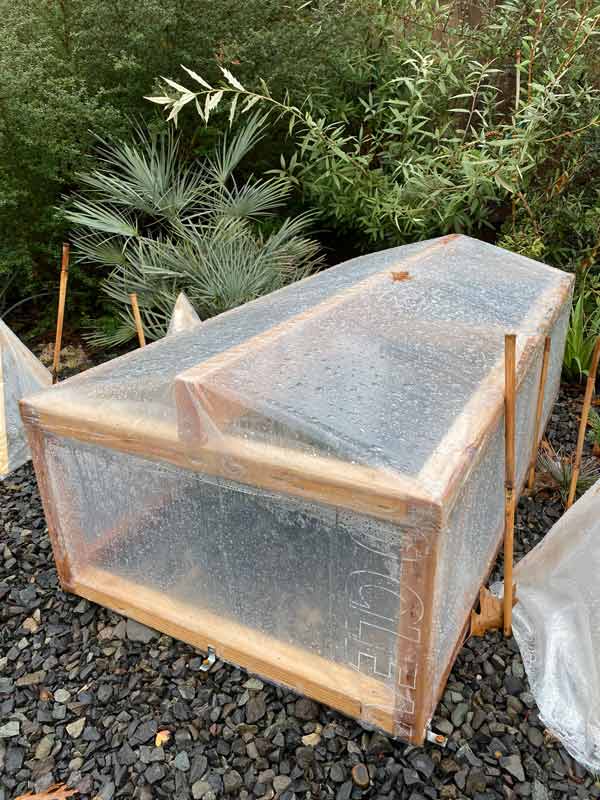
Especially in their first year or two, agaves and other xeric plants benefit greatly from a little extra protection. By the time they get to be the size of Guava Joe’s Whales Tongue Agave or other massive specimens around town they can take whatever freak weather our winter throws at them. But in these first years we want them to be as coddled and protected as possible.
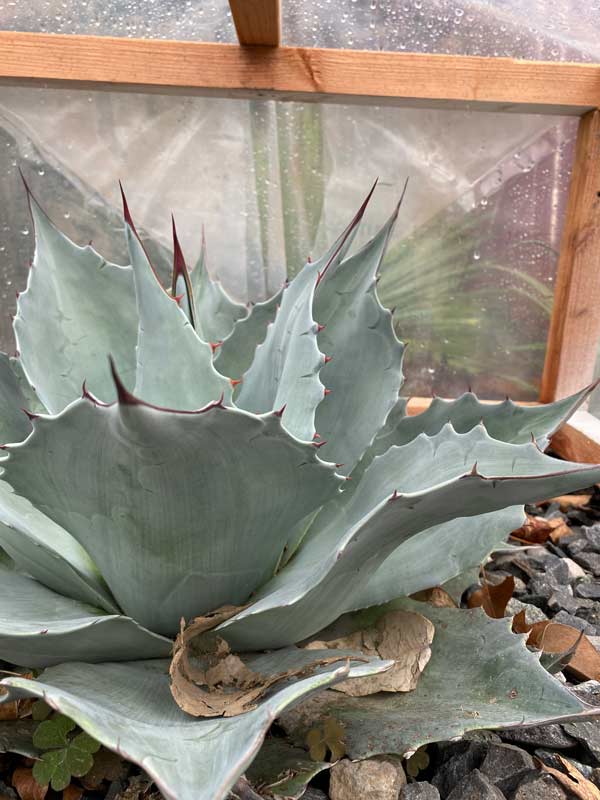
These simple miniature greenhouses work wonders at keeping plants on the fringe happy during their first years in the ground. We got this idea from the amazing Ruth Bancroft Gardens in Walnut Creek where they overwinter a staggering number of succulent plants by building these little greenhouses over the more tender or dry-loving species.
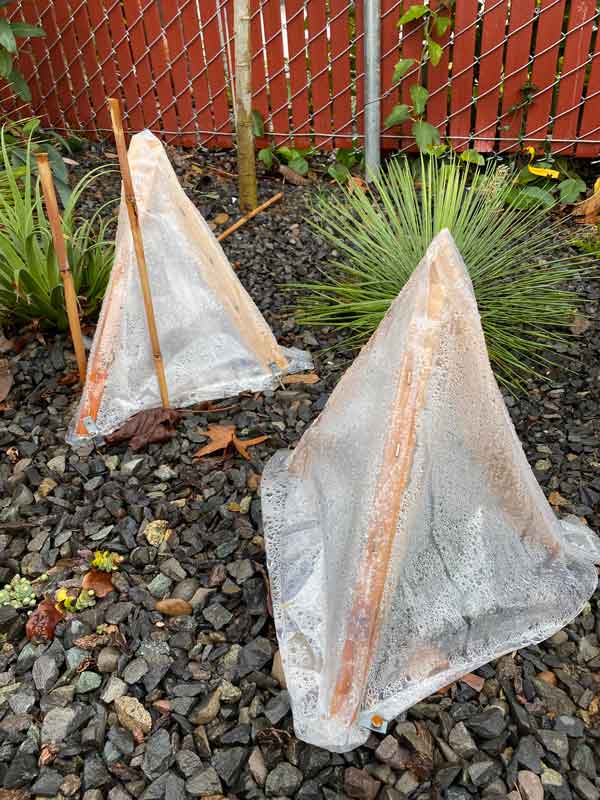
Overwintering structures can be as simple or as complex as you want to make them. All the ones we’ve built have been from recycled shipping pallets and leftover greenhouse plastic scraps, so they certainly don’t need to be expensive to be effective! A few brackets and long nails are used to anchor them to the ground so they don’t go flying away in extreme wind events. And it’s so delightful to walk around after a serious rainfall event and see citrus and desert-dwelling cacti happy as clams in our foggy Northwest winter!
In a year or two once all these plants are more established they shouldn’t need any winter protection, but minimizing the harshness of winter when they’re young goes a long way in getting them established. And it’s always nice to have some makeshift greenhouses and old school holiday lights on hand for when the next Arctic blast threatens some of your more optimistic plantings. Good luck and keep those plants happy this winter!
